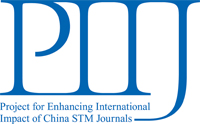Objective: To study the absorption and transepithelial transport of six coumarins (umbelliferone, osthole, columbianadin, columbianetin acetate, angelol-A and angelol-B, isolated from the roots of Angelica pubescens f. biserrata) in the human Caco-2 cell monolayer model.
Methods: The in vitro cultured human colon carcinoma cell line, Caco-2 cell monolayer model, was applied to study the absorption and transport of the six coumarins from apical (AP) to basolateral (BL) side and from BL to AP side. The six coumarins were measured by reversed-phase high-performance liquid chromatography (HPLC) coupled with ultraviolet absorption detector. Transport parameters and apparent permeability coefficients (Papp) were calculated and compared with those of propranolol as a control substance of high permeability and atenolol as a control substance of poor permeability. The transport mechanism of angelol-B was assayed by using iodoacetamide as a reference standard to inhibit ATP-dependent transport and MK571 as a well-known inhibitor of MRP2.
Results: The absorption and transport of six coumarins were passive diffusion as the dominating process. The Papp values of umbelliferone, osthole, columbianadin, columbianetin acetate, angelol-A and angelol-B from AP to BL side were (2.679±0.263)×10 -5, (1.306±0.324)×10 -5, (0.595±0.086)×10 -6, (2.930±0.410)×10 -6, (1.532±0.444)×10 -5 and (1.413±0.243)×10 -5 cm/s, and from BL to AP side were (3.381±0.410)×10 -5, (0.898±0.134)×10 -5, (0.510±0.183)×10 -6, (0.222±0.025)×10 -6, (1.203±0.280)×10 -5 and (0.754±0.092)×10 -5 cm/s, respectively. In this assay, the Papp value of propranolol was 2.18×10 -5 cm/s and the Papp value of atenolol was 2.77×10 -7 cm/s. Among the 6 coumarins, the Papp values of umbelliferone, osthole, angelol-A and angelol-B from AP to BL side were identical with that of propranolol, and columbianadin and columbianetin acetate lied between propranolol and atenolol. When replaced the HBSS with EBSS, and iodoacetamide or MK-591 were used in the experiment, the Papp of angelol-B had no statistical difference as compared with the control group. In the mean total recoveries, umbelliferone was (83.31±3.52) %, angelol-A was (77.39±7.38) %, osthole, columbianadin and angelol-B were between 50% to 65%, and columbianetin acetate was lower than 10%. The accumulation rates of osthole and columbianadin in the Caco-2 cells were (36.15±5.87) % and (53.90±4.39) %, respectively.
Conclusion: The absorption and transport of umbelliferone, osthole, columbianadin, columbianetin acetate, angelol-A and angelol-B are passive diffusion as the dominating process in Caco-2 cell monolayer model. Umbelliferone, osthole, angelol-A and angelol-B are estimated to be highly absorbed compounds, and columbianadin and columbianetin acetate are estimated to be moderately absorbed compounds. In the Caco-2 cells, osthol and columbianadin appear to accumulate, and columbianetin acetate may be metabolited. The absorption and transport of angelol-B are not influenced by the change of pH and the presence of iodoacetamide or MK571.
 Table of Content
Table of Content














